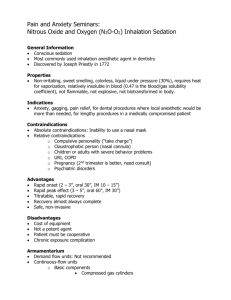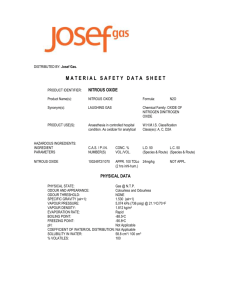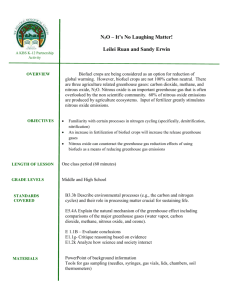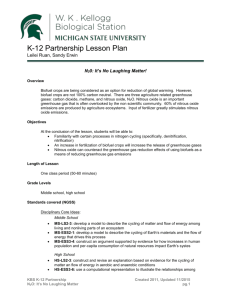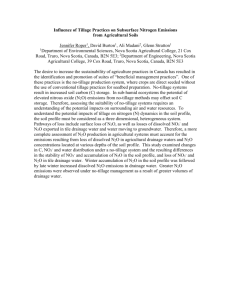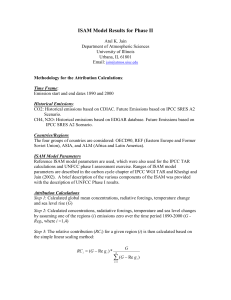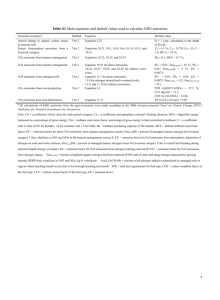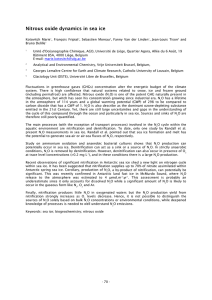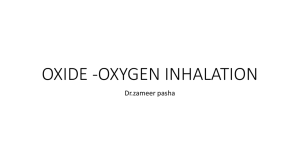Emissions of Nitrous Oxide from Livestock Operations
advertisement
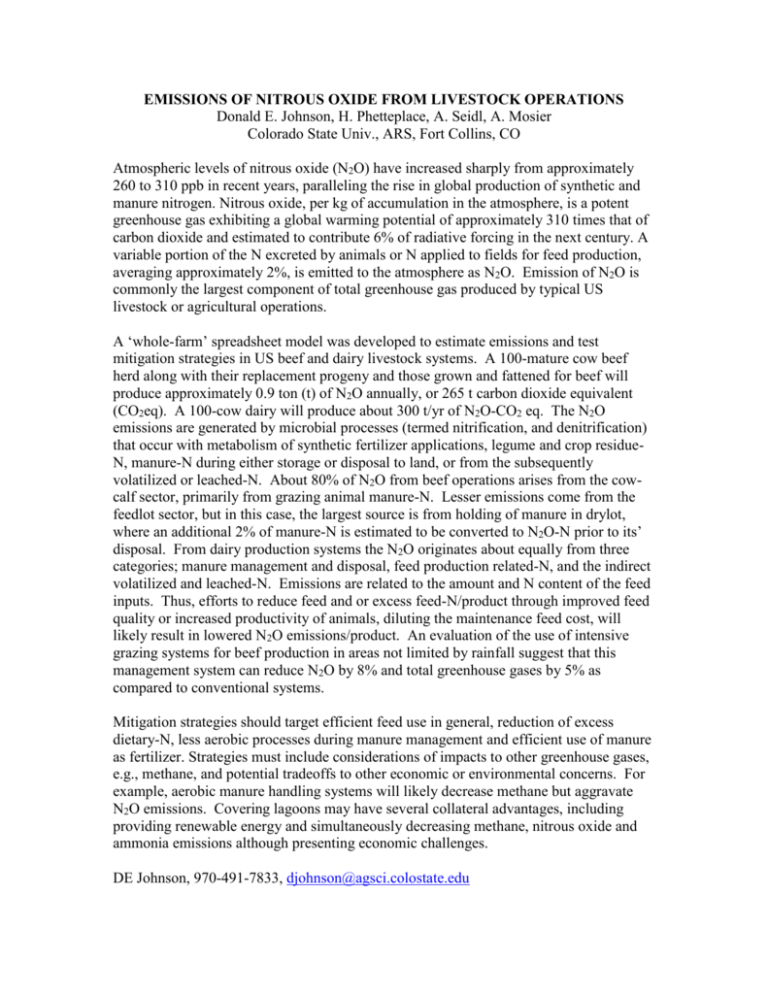
EMISSIONS OF NITROUS OXIDE FROM LIVESTOCK OPERATIONS Donald E. Johnson, H. Phetteplace, A. Seidl, A. Mosier Colorado State Univ., ARS, Fort Collins, CO Atmospheric levels of nitrous oxide (N2O) have increased sharply from approximately 260 to 310 ppb in recent years, paralleling the rise in global production of synthetic and manure nitrogen. Nitrous oxide, per kg of accumulation in the atmosphere, is a potent greenhouse gas exhibiting a global warming potential of approximately 310 times that of carbon dioxide and estimated to contribute 6% of radiative forcing in the next century. A variable portion of the N excreted by animals or N applied to fields for feed production, averaging approximately 2%, is emitted to the atmosphere as N2O. Emission of N2O is commonly the largest component of total greenhouse gas produced by typical US livestock or agricultural operations. A ‘whole-farm’ spreadsheet model was developed to estimate emissions and test mitigation strategies in US beef and dairy livestock systems. A 100-mature cow beef herd along with their replacement progeny and those grown and fattened for beef will produce approximately 0.9 ton (t) of N2O annually, or 265 t carbon dioxide equivalent (CO2eq). A 100-cow dairy will produce about 300 t/yr of N2O-CO2 eq. The N2O emissions are generated by microbial processes (termed nitrification, and denitrification) that occur with metabolism of synthetic fertilizer applications, legume and crop residueN, manure-N during either storage or disposal to land, or from the subsequently volatilized or leached-N. About 80% of N2O from beef operations arises from the cowcalf sector, primarily from grazing animal manure-N. Lesser emissions come from the feedlot sector, but in this case, the largest source is from holding of manure in drylot, where an additional 2% of manure-N is estimated to be converted to N2O-N prior to its’ disposal. From dairy production systems the N2O originates about equally from three categories; manure management and disposal, feed production related-N, and the indirect volatilized and leached-N. Emissions are related to the amount and N content of the feed inputs. Thus, efforts to reduce feed and or excess feed-N/product through improved feed quality or increased productivity of animals, diluting the maintenance feed cost, will likely result in lowered N2O emissions/product. An evaluation of the use of intensive grazing systems for beef production in areas not limited by rainfall suggest that this management system can reduce N2O by 8% and total greenhouse gases by 5% as compared to conventional systems. Mitigation strategies should target efficient feed use in general, reduction of excess dietary-N, less aerobic processes during manure management and efficient use of manure as fertilizer. Strategies must include considerations of impacts to other greenhouse gases, e.g., methane, and potential tradeoffs to other economic or environmental concerns. For example, aerobic manure handling systems will likely decrease methane but aggravate N2O emissions. Covering lagoons may have several collateral advantages, including providing renewable energy and simultaneously decreasing methane, nitrous oxide and ammonia emissions although presenting economic challenges. DE Johnson, 970-491-7833, djohnson@agsci.colostate.edu

